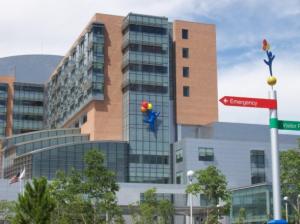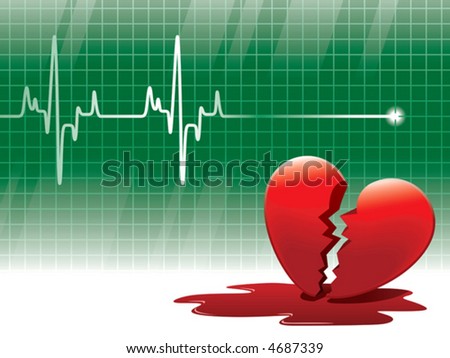Wednesday, September 26, 2012
Integrated Hospital Information System Improves Health Care
Many healthcare organizations are presently having difficulties when it comes to the integration and management of financial, operational, and clinical information. This is due to changing reimbursement models, increasing competition, and tightening of margins. The low patient care emphasis also contributes to the problem. Therefore, efficient hospital information system (HIS) is very much needed to control all of these issues.
With regards to this necessity, McKesson's Paragon® provides an information system with a common functionality, which can sustain integrated ancillary products and applications. It is a system that responds to budgetary and HIS requirements.
McKesson is a healthcare information technology company and pharmaceutical distributor. It delivers the information through a single database. A single-vendor approach gets rid of the inefficiencies and complexities that are usually associated with multi-vendor solutions.
The Paragon HIS has also a complete integrated system for care management, clinical workflow, practice management, pharmacy automation, and medical supply management. All of these address the needs for a certified Electronic Health Record (EHR), safety of the patients, revenue cycle management, and a lot more.
This company provides information technology to hospitals starting with the large, multi-entity organizations up to community and critical hospitals. This is designed for the dynamic needs of healthcare organizations that include medical professionals in uniform scrubs.
McKesson invests $1 billion in R&D technology as part of its future initiatives, entitled Better Health 2020. This is for the purpose of utilizing information technology in health care strategically. Furthermore, this would be of great help for healthcare providers to achieve better business, healthcare service, and connectivity. Also, it is a way of delivering better medical care to patients.
Thursday, October 20, 2011
Multivitamins Can't Prolong Life
"...there are no benefits to taking multivitamins or supplements, at least if the hope is to prolong life or prevent disease or cancer." (Jaakko Mursu, nutritional epidemiologist at the University of Minnesota)
Sunday, October 9, 2011
Disease Contamination at Hospitals are Possibly Caused by Scrubs Cheap and Nursing Uniforms
Wednesday, August 10, 2011
Airport Hospitals: A New Trend
- New York’s JFK airport
- New Jersey’s Newark international airports
- Hartsfield-Jackson Atlanta International Airport (ATL)
- Memphis International Airport (MEM)
- Boston Logan International Airport (BOS)
- Milwaukee Mitchell International Airport (MKE)
- Baltimore Washington International Airport (BWI)
- Newark Liberty International Airport (EWR)
- Chicago O’Hare International Airport (ORD)
- Philadelphia International Airport (PHL)
- Honolulu International Airport (HNL)
- Phoenix Sky Harbor International Airport (PHX)
- Houston Hobby Airport (HOU)
- Portland International Airport (PDX)
- Indianapolis International Airport (IND)
- Portland International Jetport (PWM)
- Los Angeles International Airport (LAX)
- Romulus/Detroit Metro Airport (DTW)
- Louisville International Airport (SDF)
- San Antonio International Airport (SAT)
- Manchester Boston Regional Airport (MHT)
- Washington Dulles International Airport (IAD)
Tuesday, July 19, 2011
The July Effect on Hospitals: Truth or Myth?
"Key to the understanding that paper, however, is grasping that its conclusions apply solely to teaching hospitals, institutions where residents and interns treat patients as part of their medical training. It's therefore not true that all hospitals become a bit more dangerous in July. It's also not true that all teaching hospitals experience this decline.
Friday, June 10, 2011
The Threat From European E. Coli
Wednesday, May 18, 2011
A Glimpse of Best Children's Hospital in US
The hospital with a 396-licensed bed children's hospital in the Longwood Medical and Academic Area of Boston, Massachusetts. Children's was the first stand-alone pediatric hospital in New England to be awarded Magnet status by the American Nurses Credentialing Center. One of the largest pediatric medical centers in the United States,Children's offers a complete range of health care services for children from birth through 21 years of age. Its Advanced Fetal Care Center can begin interventions at 15 weeks gestation, and in some situations (e.g., congenital heart disease and strabismus) Children's treats adults. Children's Hospital scientist Dr. John Enders and his team were first to successfully culture the polio virus and were awarded the Nobel Prize in Physiology or Medicine in 1954.Dr. Joseph Murray, chief plastic surgeon at Children's Hospital Boston from 1972-1985 was awarded the Nobel Prize in Physiology or Medicine in 1990 for his research on immunosuppression.

The Children's Hospital of Philadelphia (CHOP) is one of the largest and oldest children's hospitals in the world. CHOP has been ranked as the best children's hospital in the United States by U.S. News & World Report and Parents Magazine in recent years. As of 2008, it was ranked #1 in the nation for paediatrics. Each year the hospital admits more than 15,000 children and more than 600,000 are seen in the emergency and outpatient departments.

Cincinnati Children's Hospital Medical Center (CCHMC) is a 523-bed pediatric hospital located in Cincinnati, Ohio. It is home to the country's busiest pediatric emergency department, performs the second largest number of surgical procedures at a children's hospital in the nation, and is southwest Ohio's only Level 1 pediatric trauma center. Cincinnati Children's receives the second-most NIH funds of any pediatric institution in the United States. The pediatric residency training program at CCHMC is among the largest in the world, training approximately 130 graduate physicians each year. Cincinnati Children's is home to a large neonatology department that oversees newborn nurseries at local hospitals and the medical center's own 59-bed Level III Regional Center for Newborn Intensive Care.American Hospital Association-McKesson Quest for Quality Prize for its leadership in improving outcomes through family-centered care and a dedication to transparency (2006).

Texas Children's Hospital is a pediatric hospital located in the Texas Medical Center in Houston, Texas. With 639 licensed beds and 465 beds in operation, Texas Children's is the largest children's hospital in the United States and is affiliated with the Baylor College of Medicine as that institution's primary pediatric training site. Texas Children's has garnered widespread recognition for its expertise and breakthrough developments in the treatment of pediatric cancer, diabetes, asthma, HIV, premature birth, attention-related disorders, organ transplants and cardiogenic disorders. More than 42 pediatric subspecialties are available to patients at Texas Children's. The hospital's medical staff includes more than 1,580 board-certified, primary-care physicians, pediatric subspecialists, pediatric surgeons and dentists. In 2003, Texas Children's more than 1,000 nurses achieved national Magnet Recognition, one of the highest honors in nursing.

The Children’s Hospital is a nationally-ranked, nonprofit hospital for children located in Colorado. For more than a decade, U.S. News & World Report has recognized The Children's Hospital as one of the nation's top 10 children’s hospitals. The Children’s Hospital ranked seventh (7th) in the magazine's “America’s Best Children’s Hospitals” issue published in May 2008. The Children’s Hospital was awarded Magnet nursing status in 2005. The Magnet Nursing Services Recognition Program was established in 1993 to recognize healthcare organizations that provide the very best in nursing care. Out of 100 children’s hospitals in the nation, The Children’s Hospital ranked 10th for overall care; 2nd in pulmonary care; 7th in ER care; and 9th in orthopedic care.
Opened in 1912 as The Harriet Lane Home for Invalid Children, the nation’s first pediatric hospital affiliated with an academic research institution, Johns Hopkins. Baltimore banker Henry Johnston and his wife Harriet Lane bequeathed our founding funds in memory of their sons, who died in childhood from rheumatic fever. By 1930, their clinicians had discovered that sulfa drugs can prevent its fatal cardiac devastation. According from them, "for nearly a century now, we’ve been pushing the boundaries of American pediatric medicine and developing world-class care for the sickest children and their families. Visit here often for more about our revolutionary brand of medicine and the dedication, innovation and brilliance..."
 Twitter
Twitter Facebook
Facebook Flickr
Flickr RSS
RSS


